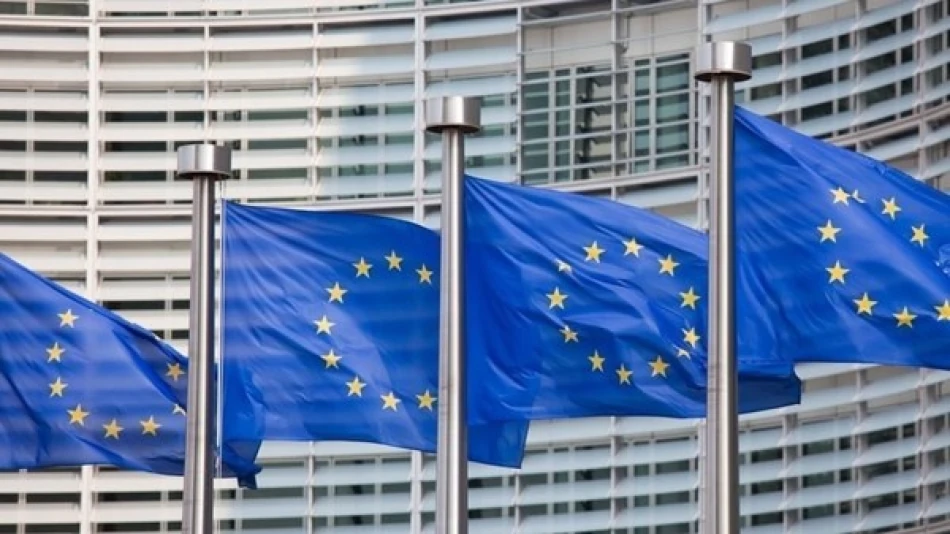
Europe Readies Tariff Package if US Trade Talks Falter: A Potential Trans-Atlantic Showdown Looms
EU Prepares €95 Billion Tariff Retaliation as Trump Trade War Escalates
The European Commission is seeking approval from member states to impose punitive tariffs on €95 billion worth of U.S. imports, as negotiations with Washington stall and President Trump's threatened 30% tariffs on European goods loom from August 1st. This represents one of the largest retaliatory trade packages in modern transatlantic relations, signaling Europe's readiness to match American protectionism blow for blow.
The Stakes: A Transatlantic Trade War
The European Union's proposed countermeasures target a carefully curated list of American industrial and agricultural products, designed to maximize political pressure on key U.S. constituencies. This tactical approach mirrors China's strategy during the 2018-2020 trade war, where Beijing targeted soybeans from Trump-supporting states and manufactured goods from swing districts.
A European Commission spokesperson confirmed Wednesday that while Brussels continues to pursue diplomatic solutions, the retaliatory package has been submitted to member state capitals for approval. The dual-track approach—negotiating while preparing for economic warfare—reflects the EU's evolved stance on trade disputes since Trump's first presidency.
Market Implications and Economic Fallout
Immediate Market Concerns
The escalation threatens to disrupt global supply chains already strained by geopolitical tensions and post-pandemic recovery. European exporters in luxury goods, automotive, and machinery sectors face immediate pressure, while American agricultural exporters—particularly in soybeans, corn, and pork—could see European market access severely restricted.
Currency markets are already pricing in trade war risks, with the euro weakening against the dollar as investors anticipate reduced transatlantic commerce. Export-dependent European stocks, particularly German manufacturers, have underperformed broader indices since Trump's tariff threats intensified.
Long-term Strategic Shifts
This dispute accelerates Europe's strategic pivot toward economic sovereignty, a trend that began during Trump's first term and continued under Biden's "America First" industrial policies. The EU's willingness to engage in tit-for-tat tariff wars marks a departure from its traditional multilateral approach to trade disputes.
Historical Context and Precedent
The current standoff echoes the steel and aluminum tariff disputes of 2018, when Trump imposed 25% and 10% tariffs respectively on European metals. However, the scale is dramatically larger—the €95 billion figure represents roughly 15% of total U.S.-EU trade, compared to the relatively narrow sectoral disputes of Trump's first presidency.
Unlike previous trade tensions that focused on specific industries, this confrontation spans the entire economic relationship. The breadth suggests both sides view this as a fundamental renegotiation of post-war trade architecture rather than a tactical dispute.
Political Calculations on Both Sides
Trump's 30% tariff threat serves multiple domestic political purposes: appealing to protectionist voters, pressuring European allies on defense spending, and creating negotiating leverage. The August 1st deadline coincides with peak campaign season, maximizing political impact.
Europe's response reflects internal political dynamics as well. Germany's export-dependent economy faces the greatest risk, while France's agricultural sector could benefit from reduced American competition. The Commission's ability to secure unanimous member state support will test European unity under economic pressure.
What This Means for Global Trade
The EU-U.S. dispute signals a broader fragmentation of the global trading system. With China already operating under extensive American tariffs and Europe now preparing similar measures, the post-1945 liberal trade order continues its steady erosion.
For businesses, this means accelerated supply chain diversification and increased costs. For consumers, it signals higher prices across multiple product categories. For policymakers globally, it demonstrates that even traditional allies are willing to engage in economic warfare when core interests clash.
The next few weeks will determine whether this remains a negotiating tactic or evolves into a full-scale trade war that could reshape transatlantic economic relations for years to come.
Most Viewed News

 Layla Al Mansoori
Layla Al Mansoori






